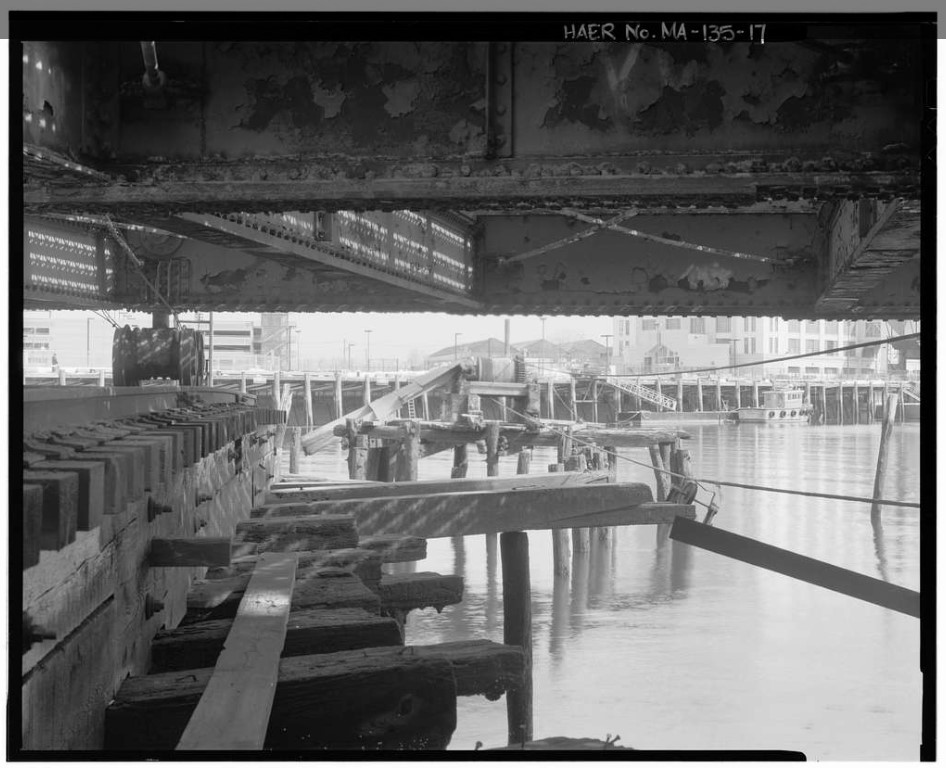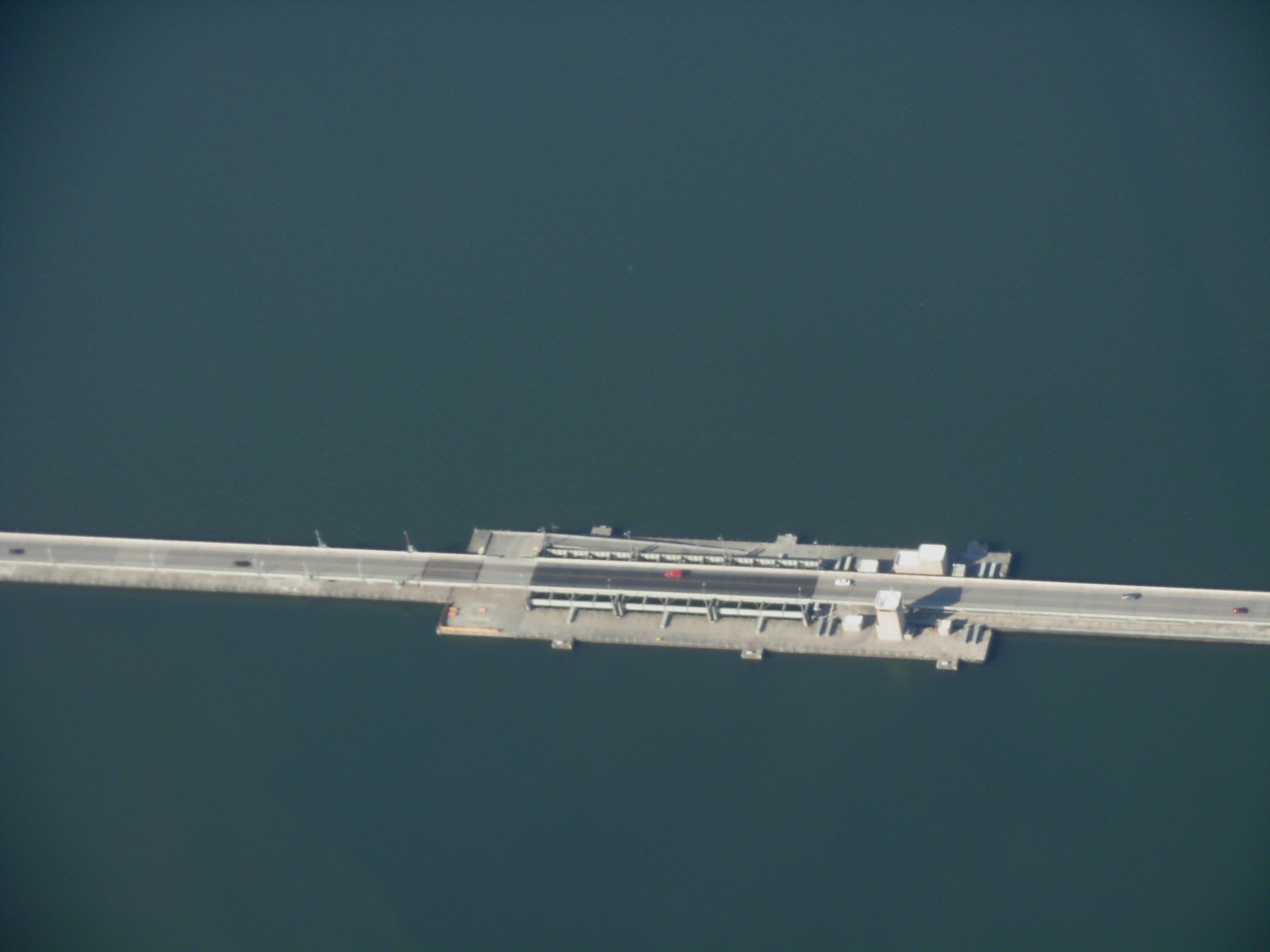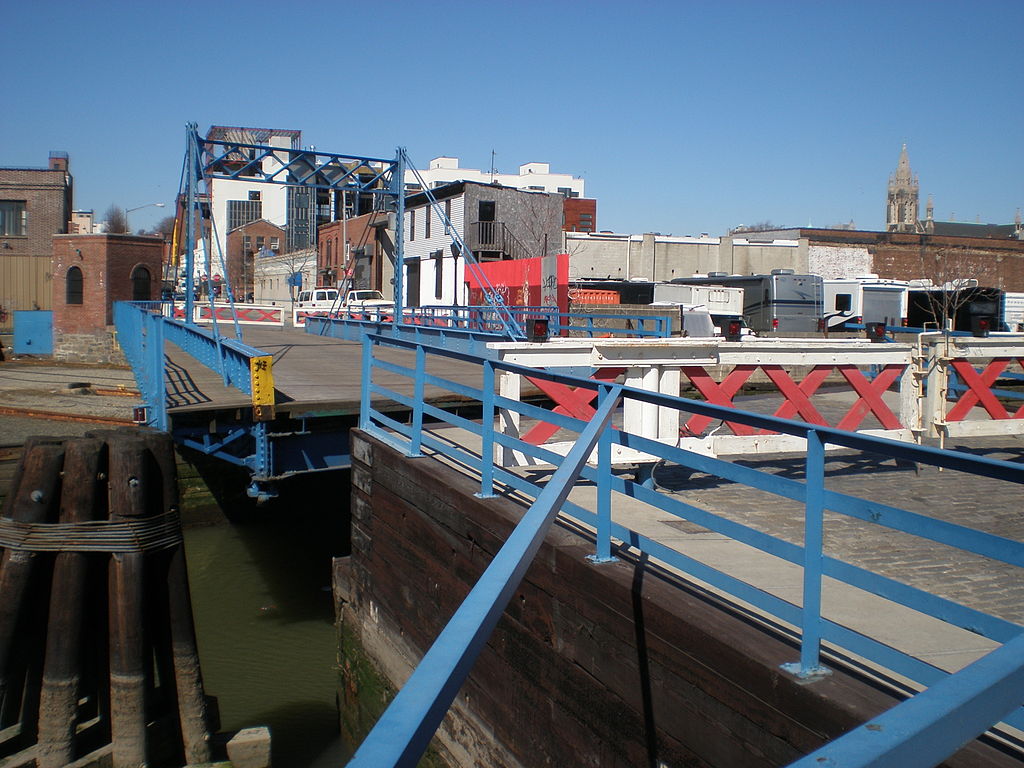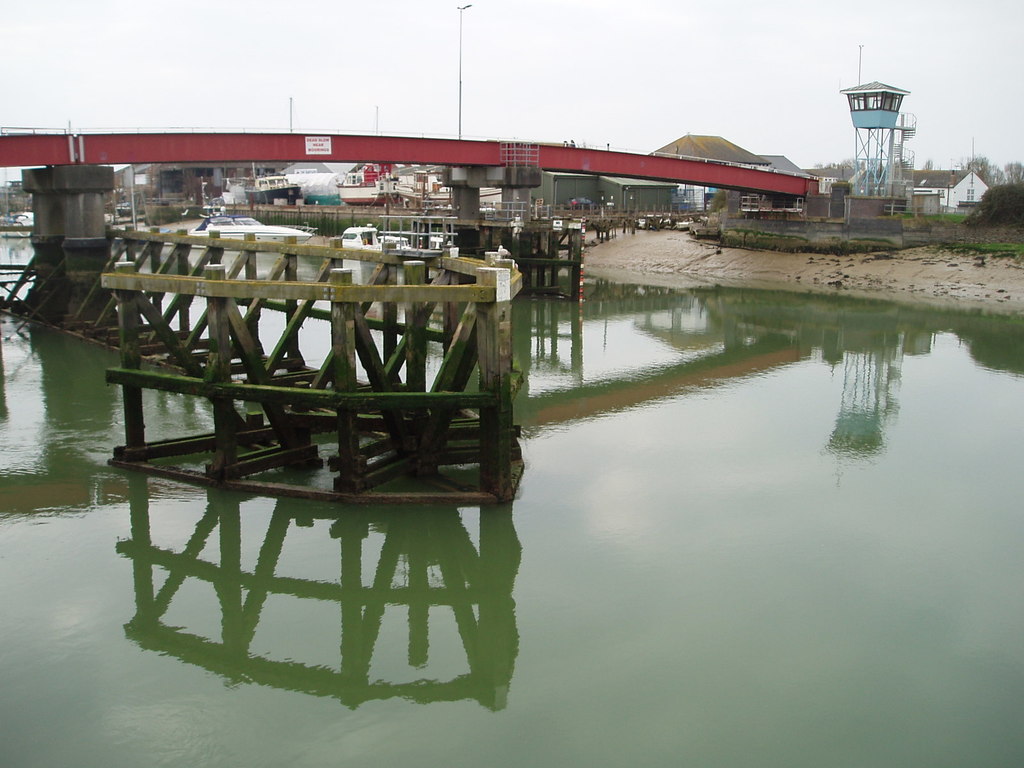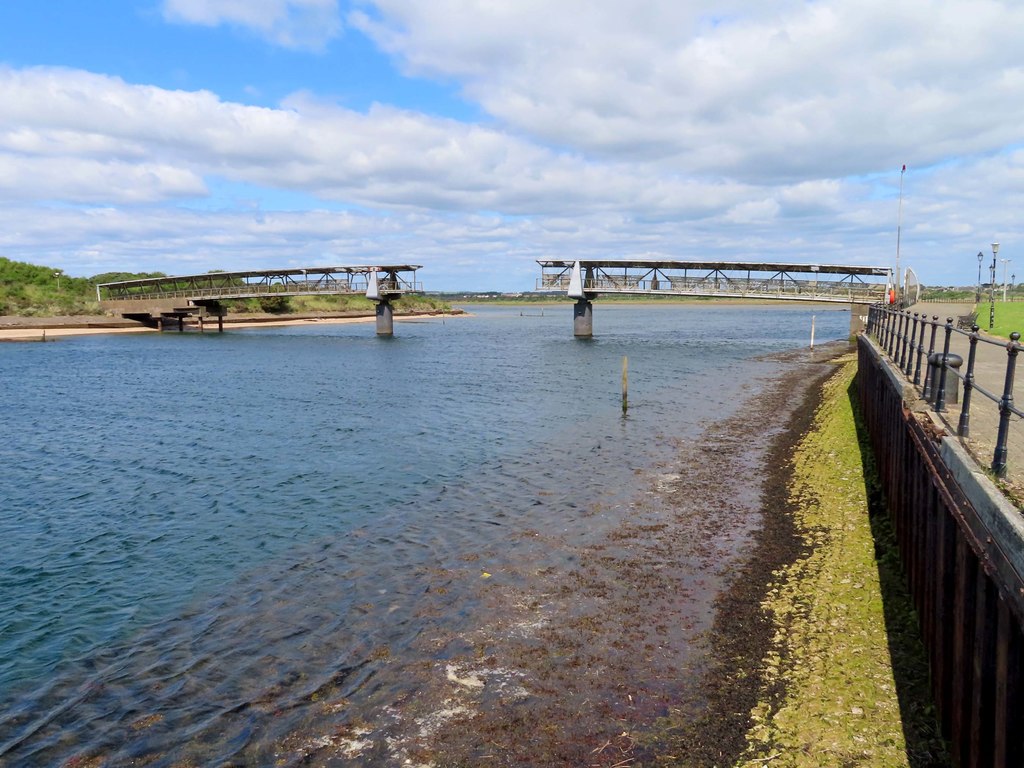Retractable bridge
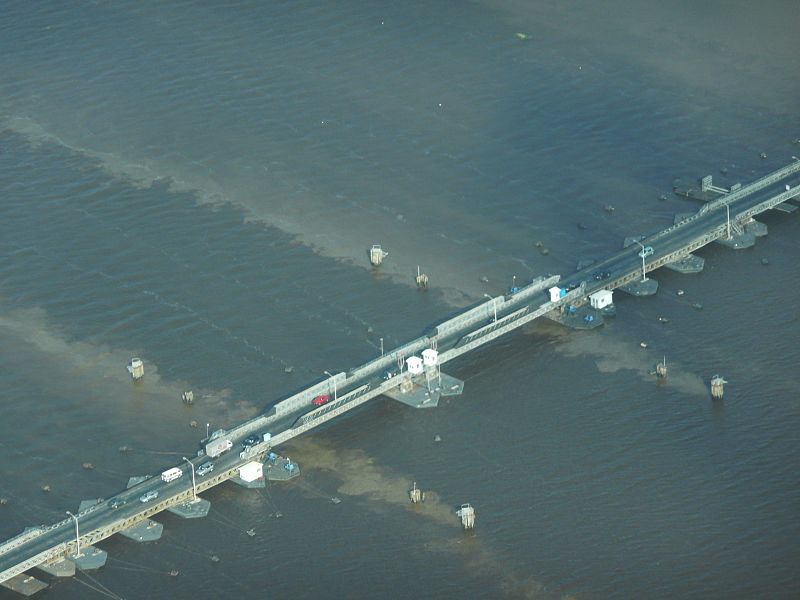
|
| Retractable bridges, such as this one located in Demerara Harbour, are popular in Guyana. |
Contents |
[edit] Introduction
Bridges are a common feature of the built environment and one of the key elements of civil engineering. The basic principles of bridge design are dependent on the load-bearing structure. These are generally beam, arch or suspension structures.
Some bridges are also defined by other characteristics, for example a movable bridge is defined by its functionality. These bridges are designed in a way that allows them to accommodate different situations and different types of traffic.
One kind of movable bridge is a retractable bridge or thrust bridge. Modern versions of rolling bridges may be referred to as retractable bridges.
[edit] Retractable bridges
This type of movable bridge can slide to an open position to provide clearance for waterway traffic. There are several methods that can be used to perform this retraction function.
[edit] Retractile
A classic retractile bridge is one in which the span is pulled away on rails. It is believed that this type of retractile bridge was invented by Thomas Willis Pratt in the 1860s.
The Summer Street Bridge in Boston, Massachusetts, is a retractile bridge that was built in 1899. The bridge was the site of a major traffic accident in 1916. It is still standing over the Reserved Channel, but the retractile function was decommissioned in 1970.
[edit] Floating
Some retractable bridges in the Netherlands are floating bridges known vlotbrugs. These floating bridges are positioned across canals, and when necessary, the road is retracted into structures that have been built into the canal banks.
An alternative example of a floating retractable bridge is the Hood Canal pontoon bridge in Puget Sound, Washington. When the bridge needs to be opened for waterway traffic, a section of the floating roadway is hydraulically raised up so the retracting portion can slide underneath it.
[edit] History
Because the movement of retractable bridges can require a large dedicated area to accommodate its footprint, they are no longer commonly used. However, their origins date back to medieval times.
|
This copper-plate engraving from ‘Le diverse et artificiose machine’ (The various and ingenious machines) illustrates the concept proposed by Agostino Ramelli (1531-c 1600). |
One early example was created in 1588 by Agostino Ramelli. The Italian engineer gained favour with King Henry III of France after providing a strategic method of military engineering that resulted in the breach of enemy defences. In his book of engineering designs, Ramelli proposed a retractable bridge for crossing a moat.
[edit] Noteworthy retractable bridges
Built in 1889, the Carroll Street Bridge in Brooklyn, New York is one of the oldest retractable bridges in the United States. It is one of New York City’s last bridges built with wooden planks to allow automobiles to cross (although there are strict height and weight restrictions). It was designated as a New York landmark in 1987.
The Littlehampton ferry footbridge was built in the 1980s. Known by locals as The Red Bridge, this retractable pedestrian bridge over the River Arun in Sussex is made from concrete, brick and steel. Powered by electricity, the structure retracts to accommodate ships that require access to adjacent industrial areas.
The Littlehampton retractable bridge underwent a refurbishment in April 2021. The project included repainting the bridge - in its trademark red colour - with a product designed to reduce maintenance costs.
|
The Red Bridge in Littlehampton, Sussex. |
The Bridge of Scottish Invention is a retractable footbridge situated over the River Irvine. It was built to provide access to The Big Idea science centre in North Ayrshire, Scotland. The museum closed in 2003 after just three years in operation. However, the bridge still retracts to allow tall ships to pass through.
The Bridge of Scottish Invention is one of the closest bridges to the open sea of any movable bridge across a river in Great Britain.
|
The Bridge of Scottish Invention in North Ayrshire, Scotland. |
[edit] Related articles on Designing Buildings Wiki
IHBC NewsBlog
Old Sarum fire in listed (& disputed) WW1 Hangar - Wiltshire Council has sought legal advice after fire engulfed a listed First World War hangar that was embroiled in a lengthy planning dispute.
UK Antarctic Heritage Trust launches ‘Virtual Visit’ website area
The Trust calls on people to 'Immerse yourself in our heritage – Making Antarctica Accessible'
Southend Council pledge to force Kursaal owners to maintain building
The Council has pledged to use ‘every tool in the toolbox’ if urgent repairs are not carried out.
HE’s Research Magazine publishes a major study of the heritage of England’s suburbs
The article traces the long evolution of an internal programme to research 200 years of suburban growth
IHBC Context 183 Wellbeing and Heritage published
The issue explores issues at the intersection of heritage and wellbeing.
SAVE celebrates 50 years of campaigning 1975-2025
SAVE Britain’s Heritage has announced events across the country to celebrate bringing new life to remarkable buildings.
IHBC Annual School 2025 - Shrewsbury 12-14 June
Themed Heritage in Context – Value: Plan: Change, join in-person or online.
200th Anniversary Celebration of the Modern Railway Planned
The Stockton & Darlington Railway opened on September 27, 1825.
Competence Framework Launched for Sustainability in the Built Environment
The Construction Industry Council (CIC) and the Edge have jointly published the framework.
Historic England Launches Wellbeing Strategy for Heritage
Whether through visiting, volunteering, learning or creative practice, engaging with heritage can strengthen confidence, resilience, hope and social connections.






